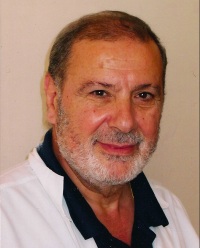 Hernia mesh has a 10-20% complication rate, says a surgeon who has performed dozens of hernia mesh removals. That’s much higher than the 1-2% complication rate that has been reported by mainstream doctors who parrot mesh makers’ claims.
Hernia mesh has a 10-20% complication rate, says a surgeon who has performed dozens of hernia mesh removals. That’s much higher than the 1-2% complication rate that has been reported by mainstream doctors who parrot mesh makers’ claims.Doctor will speak to UK Parliament
On Oct. 18, 2017, Dr. Robert Bendavid will tell the UK Parliament just how troublesome plastic mesh can be for hernia repair. Dr. Bendavid works out of Shouldice Hospital in Toronto, Canada. Jane Akre of Mesh News Desk reports that the surgeon is frustrated with the way plastic hernia mesh makers have downplayed the number of catastrophic events triggered by hernia repair that inserts plastic mesh into the human abdomen.
20% Hernia Mesh Failure Rate
Dr. Bendavid says 20% is likely a closer complication rate for the meshes used in hernia repair. He laments that, for about 20 years, synthetic meshes have become the mainstay of hernia surgery. The reason, he says, is not for efficacy. Like plastic mesh put into women for pelvic organ prolapse (POP) or stress urinary incontinence (SUI), hernia mesh surgery has exploded in popularity primarily because mesh makers have so assiduously promoted it. Mesh makers have doled out millions promoting mesh conferences, societies, and free surgical training sessions. Those promotions have even formed a whole new generation of surgeons who were taught to favor mesh over traditional suture repair for hernias. Meanwhile, the drawbacks of meshes, says Dr. Bendavid, “were always vague and nebulous.”
Today, mesh-based repairs are touted as the ideal in the guidelines of the European, Danish and Swedish Hernia Societies. The American Hernia Society has gone right along with the mesh program. Dr. Bendavid has not.
Shouldice Repair for failed Plastic Mesh Repair
The doctor notes: “Shouldice repair, a pure tissue repair, rated a mention only when infected mesh was removed!” He adds that Shouldice repair was considered the “gold standard” 20 years ago, but today no one performs or knows how to perform it outside Thornhill. (editor’s note: We believe there are some American doctors and others in other countries who do perform Shouldice repair.)
Plastic Mesh spawns New Injury
Dr. Bendavid further notes that, “The world literature is now replete with publications on chronic postherniorrhaphy inguinodynia, a condition unknown before the introduction of mesh. In 1964, in Nyhus’ classic hernia, postherniorrhaphy pain did not rate a mention in its index. In Ponka’s equally excellent book, pain is mentioned in half a column as ‘uncommon’ and due to ‘scar tissue’ (1980).”
Hernia Mesh Complications
Many publications are now providing more up-to-date statistics on postoperative complications of mesh. Dr. Bendavid says that 11% of patients will have a “history of severe chronic postoperative inguinodynia severe enough to be detrimental to their quality of life.”
Mesh Pain Irreversible
Another group of patients (3%–4%) will suffer irreversible dysejaculation, which 20 years ago, sans mesh, had an incidence of 1 in 2500 cases and was reversible. That is a hundred-fold (or 10,000%) increase. Another 10% of patients will suffer severe testicular pain secondary to mesh erosion of the vas. This in some cases requires an orchidectomy. Additionally, transmigration of mesh into adjacent organs is commonly reported but not systematically quantified with any accuracy through industrial surveillance. Dr. Bendavid asks: “With such evidence, would a ‘duly informed’ patient consent to mesh-based surgery?
Mesh is now used in 90-97% of hernia surgeries around the world, but in just 3% of the cases at the Shouldice Hospital.
Professor Volcker Schumpelick, Editor in Chief of the Hernia, in his address to the American Hernia Society (2005) stated: “[D]espite the introduction of mesh and laparoscopy, there has been no reduction in the incidence of hernia recurrences in the last 30 years. That incidence worldwide is 14%.” So Dr. Bendavid fairly asks: “Why are the European guidelines rushing to be launched as World guidelines?”
Dr. Bendavid has helped launch a study to pin down the percentages of complications resulting from hernia meshes used in hernia surgery. He says the current hernia mesh surgery complication rate, “estimated at 10-20%, could be brought to a mere 5% with simple emphasis of anatomy. The Shouldice Hospital already demonstrated, 20 years ago, that 1%–5% is the magic number depending on the type of hernia.”
The doctor also notes that it takes surgeons 4-6 years to learn the necessary skills to safely and successfully perform hernia mesh surgery, while plastic mesh industry representatives, who are not always doctors, train doctors to perform plastic mesh surgery in minutes. How many hernia sufferers would rather their hernia surgeon have trained for 4-6 years rather than for just a few minutes?
Hernia Mesh 10-20% Complication Rate, says Surgeon
How many people would rather have hernia surgery with a product (pure tissue) that can be safely and fully removed, rather than with a product that may be impossible to fully remove (plastic hernia mesh) and that could cause permanent, debilitating pain?
Ralph Nader, for one – who tends to do his research – chose to forego plastic mesh for his own hernia repair. Mr. Nader chose Dr. Bendavid to perform his recent hernia surgery. The man who started Consumer Reports may know a thing or two when it comes to safe products.
Related
- Ethicon Hernia Mesh Lawsuit
- Physiomesh Lawsuit | Hernia Mesh
- Recurrence of Inguinal Hernias Repaired. . .

by Matthews & Associates




